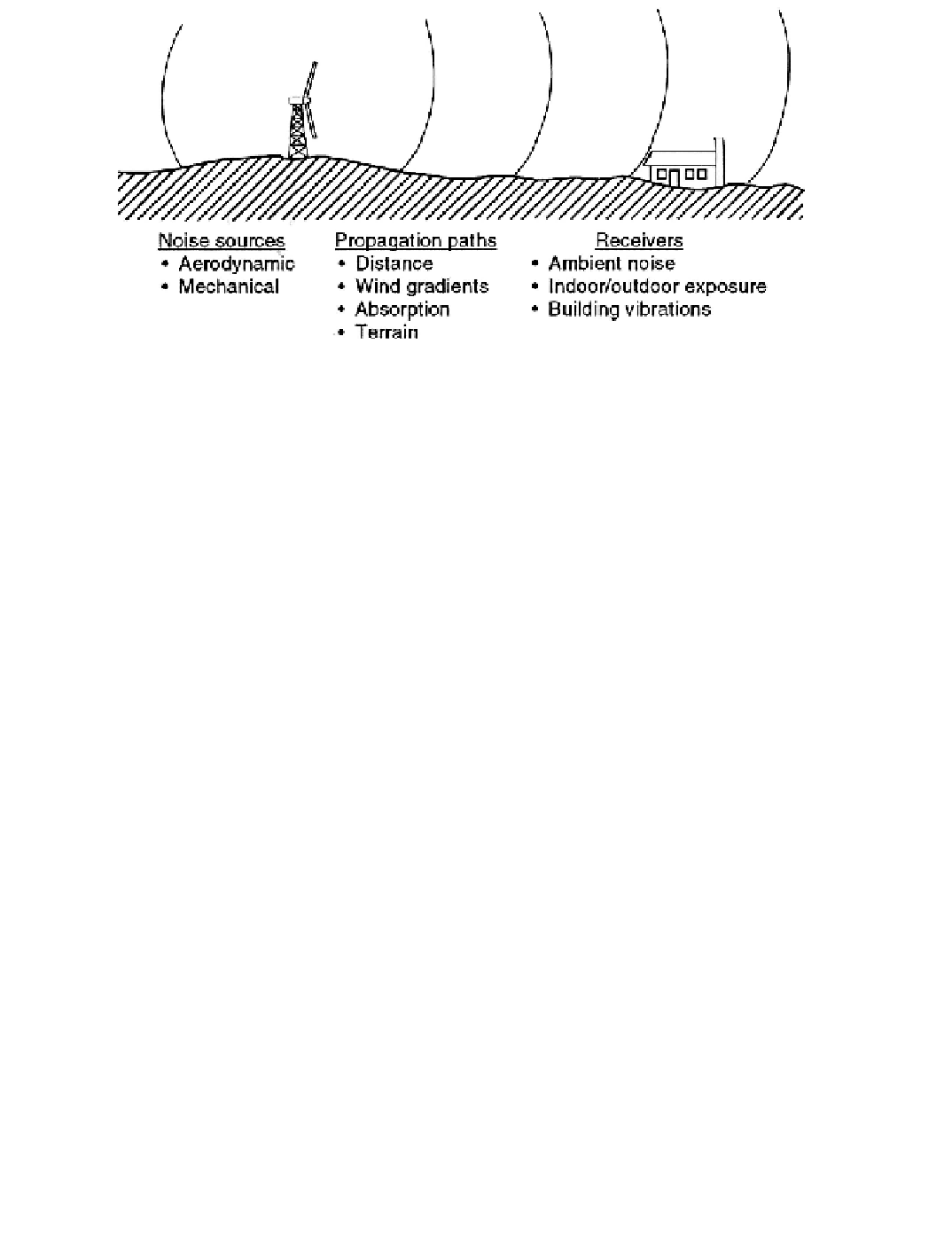Environmental Engineering Reference
In-Depth Information
Figure 7-1. Factors contributing to wind turbine noise.
Significant factors relevant to the potential environmental impact of wind turbine noise
are illustrated in Figure 7-1. All acoustic technology is built on an understanding of three
primary elements:
Noise sources, propagation paths
,
and
receivers.
The purpose, therefore,
of this chapter is to describe in quantitative terms the specific wind turbine factors that
characterize each of these elements. The most important of these are listed in Figure 7-1.
The noise produced by wind turbines ranges in frequency from low values that are
sometimes inaudible to higher values in the normal audible range [Kelley
et al.
1985].
Although increased distance is beneficial in reducing noise levels, the wind can enhance
noise propagation in certain directions and impede it in others. A unique feature of wind
turbine noise is that it can result from essentially continuous periods of daytime and
nighttime operation. This is in contrast to the more common aircraft and road traffic noises
that vary markedly as a function of time of day.
This chapter summarizes available information on the physical characteristics of the
noise generated by wind turbines and includes example
sound pressure time histories,
narrow-band
and
broadband frequency spectra
,
and
noise radiation patterns.
Also
reviewed are noise measurement standards, analysis technology, and methods for character-
izing and predicting the intensity of noise from wind turbines, both singly and in clusters.
Atmospheric propagation data are included that illustrate the effects of distance and the
effects of refraction caused by a vertical gradient in the mean wind speed. Perception
thresholds for humans are defined for both narrow-band and broadband spectra from
systematic tests in the laboratory and from observations in the field. Also summarized are
structural vibrations and interior sound pressure levels, which could result from the low-
frequency noise excitation of buildings.
For more detailed information, a bibliography is available that lists technical papers on
all aspects of wind turbine acoustics [Hubbard and Shepherd 1988].
Characteristics of Wind Turbine Noise
Noise from wind turbines may be characterized as aerodynamic or mechanical in origin.
Aerodynamic noise components are either narrow-band (containing discrete harmonics) or
broadband (random) and are related closely to the geometry of the rotor, its blades, and
their aerodynamic flow environments. The low-frequency, narrow-band rotational compo-
nents typically occur at the blade passage frequency (the rotational frequency times the

Search WWH ::

Custom Search